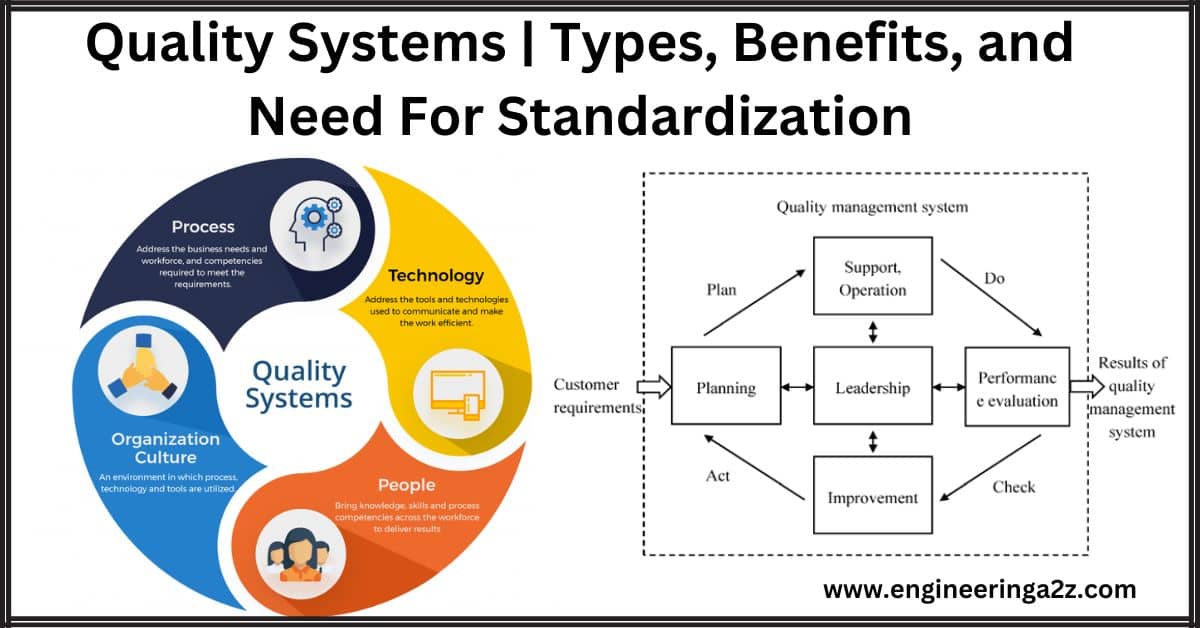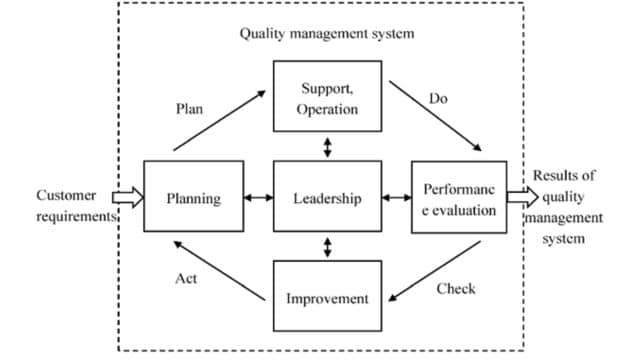
Table of Contents
A Quality Management System (QMS) is like a set of organized rules that a company follows to make sure its products or services are excellent. This system helps the company know how to do things right, like following steps, assigning tasks, and making sure everyone does their job well.
Imagine the QMS as a recipe for making something delicious. It tells you what ingredients to use, the steps to follow, and how to make sure the final dish turns out amazing. Just like that, a QMS tells a company how to work smoothly, do good things, and keep customers happy.
There’s a special rulebook called ISO 9001:2015 that lots of companies follow. This rulebook is like a superstar recipe for quality. When people say “QMS,” they might mean the ISO 9001 rules or the papers that explain the rules, but it’s actually the entire way of doing things properly. The papers are like the instructions that describe how to use the QMS recipe.

So, a QMS helps a company do things correctly, meet customer expectations, and keep getting better at what it does.
Types of Quality Systems
There are various quality management systems, each with its own strengths and weaknesses. Some of the most common types include:
Standardized systems:
Standardized systems are like following a set of well-known rules that everyone agrees on. Imagine it’s like playing a game with a rulebook that everyone uses. For instance, ISO 9001 is a rulebook for how businesses should make sure their products or services are really good.
To get an ISO certificate, a business needs to show that it follows all the rules in the ISO rulebook. This means they need to prove that they’re doing things right, keeping records, and getting checked by experts to make sure they’re on track.
Having an ISO certificate is usually a choice for most businesses. They don’t have to get it, but sometimes they do it because it helps them show they’re doing things well. However, in certain fields, like specific industries, the rules might say they have to get the certificate.
Total quality management (TQM):
TQM is like a special way of managing a business. The goal is to keep customers happy and the business successful for a long time. It’s all about everyone in the company working together to make things better.
They measure how things are done and use that info to make improvements. It’s like they’re always trying to do things even better, like a game where the score keeps getting higher. This way, they keep customers coming back and the business stays strong.
Continuous quality improvement:
Continuous quality improvement, or CQI, is like always trying to make things a little better bit by bit. Instead of big changes, it’s about small improvements all the time. It’s like playing a game where you keep aiming for a higher score.
In this way, it focuses a lot on teams and individual people working together. They’re really important because they make sure things are good. They use a special four-step plan called PDCA: Plan, Do, Check, Act. It’s like a cycle that helps them keep making things better and better.
Six Sigma:
Six Sigma is like a special way to make things better using numbers and facts. It’s all about making processes work really well. Imagine if you were baking cookies: you’d measure ingredients, follow steps, and check how they turn out.
With Six Sigma, they do the same thing for how a company works. They figure out the best way to do things, measure how well it’s going, look at the data to understand what’s happening, make it even better, and then make sure it keeps working well.
Requirements of Quality Systems
Every part of a quality management system helps a company reach its main goals: making customers happy and doing things right. Quality systems are like custom-made toolkits for each company. But they all have some similar parts:
- Company’s Rules and Goals: The company’s special rules and goals for quality.
- Guidebook for Quality: A book that explains how to do things with quality.
- Steps to Follow: The ways they do things and keep records.
- Keeping Info Safe: Making sure all the important info is safe and organized.
- Inside Jobs: How the company works on the inside.
- Customers Feeling Good: Making sure customers are happy with what they get.
- Finding Ways to Improve: Looking for chances to make things even better.
- Checking How Good: Checking how well they’re doing.
Companies that make stuff want to make customers happy and do well. They need to use better and smarter ways to work. Sometimes, what customers want is written down, but just following those rules might not always work perfectly. That’s why they made special rules to make sure things are done well, like a big toolbox for companies.
The main rulebook is called ISO 9000. It explains important quality ideas and how they fit together. It helps companies pick the right tools from the toolbox.
To make sure things are really good, the company needs to check everything during production. They also look at how well they did after making stuff. This helps them make a standard system for good quality.
So, it’s like companies use special rules and tools to make things great for customers and their business.
Benefits of Good Quality Systems
When a company uses a quality management system, it helps them in many ways. Here’s how:
- Making Customers Happy: By following quality rules, the company makes customers trust them more. This brings in more customers, more sales, and people coming back for more.
- Doing Things Right: Following the quality system ensures the company follows rules and regulations, and does things in the best and most efficient way. This helps them save money and resources, so they can grow and make more profit.
Extra good things happen too:
- Better Ways of Working: They figure out the best ways to do things and get even better over time.
- Less Wasted Stuff: They waste less materials and resources.
- No More Mistakes: They prevent mistakes from happening.
- Saving Money: By avoiding mistakes and waste, they spend less money.
- Learning and Training: They find chances to learn and teach their employees.
- Happy Workers: Employees feel involved and happy.
- Big Picture Goals: The whole company knows where it’s heading.
- Showing They’re Ready: They prove they can make things well every time.
So, it’s like following a recipe that makes customers happy, saves money, and helps everyone work better together.
Need for Standardization in Quality Systems
Using standardized quality management methods has many benefits, one of which is the potential to save money. Research from the International Organization for Standardization (ISO) has shown that ISO 9001 quality standards can noticeably lower operating costs for businesses. On average, companies that adopted ISO 9001 managed to reduce their yearly expenses by 4.5%.

When businesses adopt quality standards, they improve how efficiently they work and how much they get done, all while spending less money. By simplifying processes and getting rid of inefficient manual steps, companies can save time and energy. This helps them become more productive and better able to meet what customers want.
Furthermore, when companies use standardized quality methods, they make their products and services more dependable and consistent. By sticking to set procedures, businesses ensure the quality of what they offer. This helps them earn the trust and confidence of their customers, leading to higher satisfaction and loyalty.
Frequently Asked Questions (FAQs)
What are the examples of Quality Systems?
1. ISO 9001: This is a widely used way for companies to make sure they do things well. It helps them have consistent quality in what they make or do. It’s like a set of rules that companies follow to keep their customers happy and improve how they work.
2. IATF 16949: Companies that make cars and car parts can use this special set of rules. It helps them make better cars and parts, and it also helps all the companies that provide the materials for cars work together smoothly.
3. ISO 13485: This set of rules is for companies that make medical devices, like equipment used in hospitals. It makes sure that these devices are safe and work the right way, so they can help people stay healthy.What are the types of Quality?
Quality control has 4 types of checks: before making, while making, before sending, and loading/unloading. Each checks for problems at different stages to ensure things are good and safe.
What is a Quality System in a company?
A quality system in a company is like a clear plan. It helps the company do things the right way and keep a record of how they do it. This way, they can make sure they’re meeting their goals and doing good things.
Read Also:
- Difference Between Filament Lamps and Fluorescent Tubes
- Earth Leakage Circuit Breaker (ELCB) | Types, Working Principle, And Construction
- Output Equation of Transformer
- Magnetic Field | Introduction | Effects
- Solar Collectors | Types, Advantages, and Disadvantages
- MCB : Miniature Circuit Breaker | Engineeringa2z





Leave a Reply